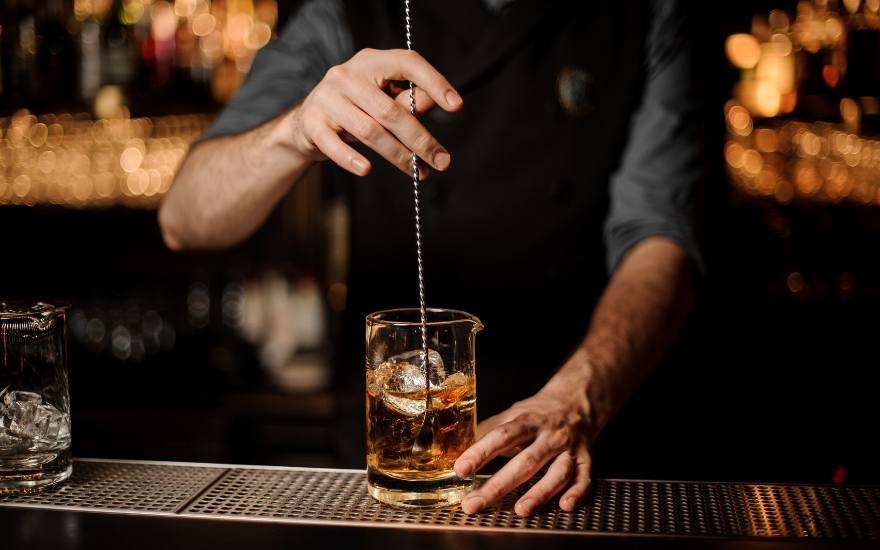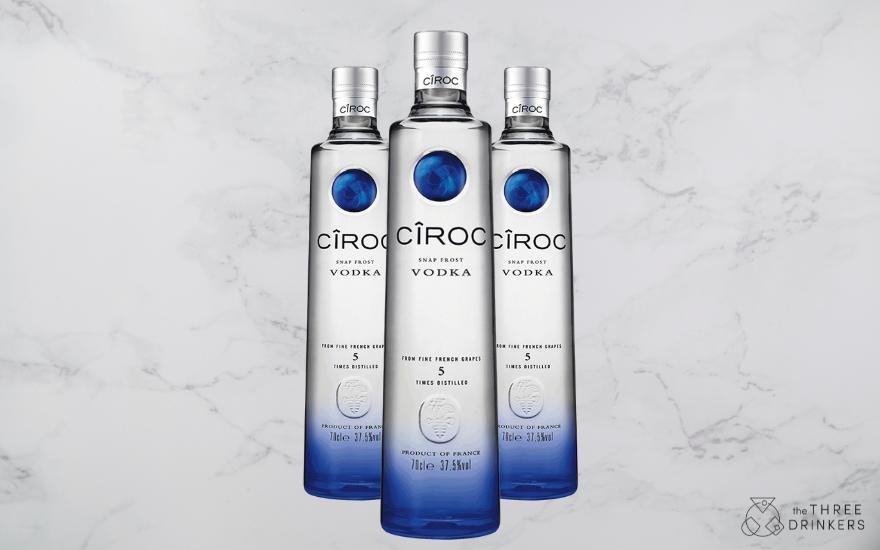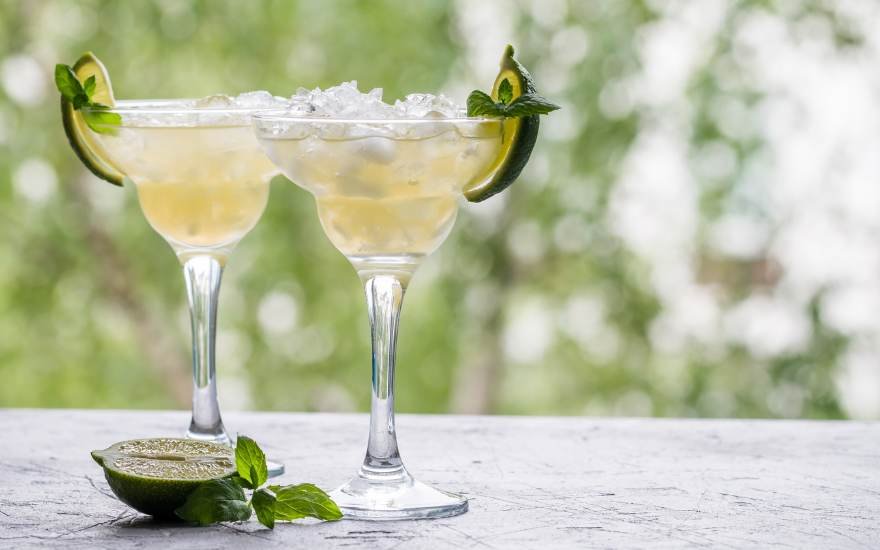Sainsbury’s shoppers and wine aficionados, get ready for some of our all-time favourite supermarket steals available this September going into October. We’ve meticulously reviewed every bottle on offer until 8th October, and these are our top picks for unmatched value. Each bottle has been recommended for its consistent quality and exceptional price. Whether you’re after reds, rosés, or whites, all priced under £10. Let’s dive into a world of wine bliss!
Sainsbury’s Red Wines September/October 2024
Mucho Mas Vino Tinto
This Spanish red is as red as it gets—juicy, jammy, and full of character. Think ripe plums, figs, and berries with a cozy dash of vanilla and a warm peppery kick. Easy-drinking and dangerously gluggable, it's a real find, especially at £7. Perfect for those midweek moments when you just need a no-fuss glass of vino.
Size: 750ml
ABV: 13.5%
Find here: £7 (usually £8.50)
Greasy Fingers Luscious Red
This Aussie blend of Shiraz and Grenache is as smooth as it gets! The Grenache brings a lovely sweetness, while the Shiraz loads it up with juicy cherry and strawberry goodness. It’s the perfect wine for sharing, whether you’re grilling red meats or serving up Italian dishes. Popular for good reason, it's super easy to find at most UK supermarkets—and even easier to drink!
Size: 750ml
ABV: 13.5%
Find here: £8 (usually £10)
19 Crimes Dark Red The Banished
Rich, bold, and full of history, this dark red blend is a tribute to the Australia’s early convict settlers. Ripe, dried berries meet dark chocolate, cloves, and a hint of vanilla in every sip. With a smooth, plush finish, it’s got a distinct sweetness that’s balanced by just enough acidity. It carries that intensity that the rest of the 19 Crimes portfolio does. Delish.
Size: 750ml
ABV: 14%
Find here: £9 (usually £10.50)
Santodeno Sangiovese Appassimento
A real gem from Emilia-Romagna, this Sangiovese is a steal for its price. Hand-picked and slow-dried, the grapes create a jammy, rich red with intense blackberry, cherry, and a hint of vanilla. It’s smooth and easy-drinking, yet still has a refreshing streak of acidity. Ideal for pairing with Italian dishes, this is midweek perfection in a bottle.
Size: 750ml
ABV: 14%
Find here: £9 (usually £11)
Sainsbury’s Rosé Wines September/October 2024
Freixenet Italian Still Rose
Delicate yet still packed with fruity charm, this still Rosé is just as refreshing as its sparkling counterpart. A blend of Glera and Pinot Noir, it offers floral aromas, crisp apple, and juicy red berries, all wrapped up in a beautifully light body. Whether you're pairing it with seafood or sipping solo, this elegant Italian rosé is sure to please.
Size: 750ml
ABV: 11%
Find here: £8.50 (usually £10)
Castillo De Ibiza Rosé
With its eye-catching curvaceous bottle, Castillo De Ibiza Rosé doesn’t disappoint. This Spanish Garnacha and Tempranillo blend delivers a refreshing burst of citrus and crisp minerality, balanced by a subtle hint of strawberry sweetness. It’s light, tart, and perfect for those sunny afternoons or as a pairing with fresh, summery dishes.
Size: 750ml
ABV: 12.5%
Find here: £10 (usually £12.50)
Sainsbury’s White Wines September/October 2024
Rocca Murer Pinot Grigio Trentino
This straw-hued Pinot Grigio from Trentino sets itself apart with crisp citrus, juicy peach, and intriguing grassy notes. There’s also a lovely mineral touch that adds surprising complexity to each sip. Light, easy-going, and extremely food-friendly, it’s perfect for pairing with shellfish, mushrooms, or mellow vegetarian dishes.
Size: 750ml
ABV: 12.5%
Find here: £7.25 (usually £8.25)
Plaimont Côtes De Gascogne Colombard Sauvignon Blanc
This vibrant blend from the sunny Côtes De Gascogne offers incredible value. The Sauvignon Blanc delivers zesty acidity, while the Colombard adds a softening touch, resulting in a refreshingly crisp wine. Perfect for cutting through mid-week meals, it’s a real winner for the price.
Size: 750ml
ABV: 11.5%
Find here: £7.25 (usually £9)
Greasy Fingers Big Buttery Chardonnay
A Supermarket Wine Bargains favourite, this rich and creamy Chardonnay has quickly become an Aussie favourite, living up to its ‘big and buttery’ name. The first sip delivers a punch of oaky vanilla, followed by luscious orchard fruits. The velvety, buttery texture takes centre stage, balanced by a dry finish that keeps it refreshing. Perfect for pairing with indulgent, greasy foods.
Size: 750ml
ABV: 13%
Find here: £8 (usually £10)
Sainsbury's Riverblock Marlborough Sauvignon, Taste the Difference
Marlborough Sauvignon fans, you’re in for a treat. This crisp and zesty wine from Marisco Vineyards bursts with tropical notes like passion fruit, lime, and gooseberry, all backed by a clean, mineral freshness. It’s not just refreshing—it’s got enough body to hold its own with heartier dishes. A standout in Sainsbury’s Taste the Difference range, it’s perfect for any occasion.
Size: 750ml
ABV: 13%
Find here: £9 (usually £10.50)
* The wines featured below this point may no longer be on offer *
Sainsbury’s Red Wines September 2024
Feuerheerd's Anchor Wine Reserva Douro DOC
Feuerheerd's Anchor Wine Reserva Douro DOC is a refined gem straight from Portugal's Douro region, boasting an impressive depth and complexity thanks to a unique 12-month finish in Vintage Port barrels. Expect a captivating blend of elegant black fruits and refined spices, balanced beautifully with a silky, lingering finish. It's a bold yet nuanced red that delivers exceptional quality for its price. At just £10, it’s hard to find another red that combines such robust flavour with such elegant restraint. Perfect for a cozy evening in or impressing dinner guests.
Size: 750ml
ABV: 14%
Find here: £10 (usually £11.50)
Santodeno Negroamaro
Santodeno Negroamaro is a luscious, inky red that thrives in the sunny heel of Italy's boot, making the most of the “bitter black” grape that’s anything but bitter. This wine bursts with intense richness, showcasing a symphony of dark fruits like plum, blackberry, and blackcurrant. A subtle hint of oaky spice rounds off the palate, adding depth and elegance. Soft, fruity, and remarkably good value, it offers ripe berry aromas, a juicy black fruit core, and a long, satisfying finish. A real favourite with us.
Size: 750ml
ABV: 13.5%
Find here: £9 (usually £11)
Barossa Ink Shiraz
Barossa Ink Shiraz is an opulent delight crafted from grapes sourced throughout the Barossa area. This bold red boasts intense notes of dark, brooding fruits like blackberry and plum, enriched by decadent mocha undertones from oak aging. It’s a natural match for hearty dishes like flame-grilled steak or game. To fully appreciate its complexity, decant and let it breathe for an hour—this simple step softens the tannins, unveiling layers of rich and refined flavours that make every sip a true pleasure. Another fave of ours we love to feature.
Size: 750ml
ABV: 14%
Find here: £9 (usually £11)
Bosman Nero
Bosman Nero is a standout South African red made entirely from Nero d’Avola grapes, originally from just two surviving Sicilian cuttings planted in 2004. This light-bodied gem is brimming with juicy cranberries and strawberries, complemented by a gentle kiss of clean spice. With its modern, elegant feel, it’s the epitome of easy drinking—perfectly suited to dishes like tomato-based pasta or steak. The fine savoury tannins and brisk acidity make it a refreshing choice for fans of fruit-forward, approachable wines with a touch of dark, delicious ripeness.
Size: 750ml
ABV: 13.5%
Find here: £10 (usually £11.50)
Sainsbury’s Rosé Wines September 2024
Silver Moki Sauvignon Blush
Silver Moki Sauvignon Blush is a must-try for those who find typical Rosés too sweet. This elegant blend takes the crisp, razor-sharp citrus notes of Sauvignon Blanc and softens them with a delicate hint of juicy peach and subtly sweet strawberry—far milder than your usual Rosé mix. The result is a beautifully balanced wine that retains the vibrant zest and freshness of a white, but with a silky twist of floral fruitiness. It's sophisticated, fresh, and feels like it should cost much more. Perfect for those seeking a refined Rosé that stands out from the crowd.
Size: 750ml
ABV: 12.5%
Find here: £7 (usually £8.25)
Rocca Murer Pinot Grigio Rosato
Rocca Murer Pinot Grigio Rosato is your go-to for easy-going midweek sipping that overdelivers in every way. This light, breezy Rosé unfolds with a charming bouquet of sunny peach sweetness and the crisp bite of red apple, all elegantly balanced. The subtle pink hue comes from vineyards nestled at the foot of the Dolomites, adding to its allure. With its poised tang and gentle sweetness, this wine brings a refreshing, fruity vibe that punches well above its price tag. Perfect for casual evenings, it’s a crowd-pleaser that doesn’t skimp on sophistication.
Size: 750ml
ABV: 12.5%
Find here: £7 (usually £8.25)
La Terrasse Rosé Pays d'Oc
La Terrasse Rosé Pays d'Oc is a delicate and crisp Rosé that encapsulates the essence of summer with every sip. From the acclaimed Domaines Paul Mas, this elegant blend of Grenache, Syrah, and Cinsault dazzles with notes of luscious red fruits, a whisper of rhubarb, and a zesty finish that’s light yet satisfying. Its pale hue and refined profile make it a versatile pairing for light dishes, seafood, or anything with tomatoes. With its subtle spice and orange peel hints, this is the quintessential French Rosé—sophisticated, stylish, and simply delightful.
Size: 750ml
ABV: 13%
Find here: £9 (usually £10.25)
Madame F Rosé
Madame F Rosé is a showstopper both inside and out, boasting a glamorous bottle and a vibrant blend of Grenache and Shiraz. This stylish Rosé dazzles with smooth strawberry sweetness, ripe pear, aromatic honeysuckle and a refreshing citrusy acidity that makes it the perfect match for seafood paella or light alfresco fare. But there’s more to love than just the taste—Madame F partners with Queer Britain, supporting the creation of the UK's first LGBTQ+ museum and celebrating LGBTQ+ artists through the Madame F Queer Britain Art Award.
Size: 750ml
ABV: 12%
Find here: £8 (usually £9.50)
Sainsbury’s White Wines September 2024
Freixenet Pinot Grigio
Freixenet Pinot Grigio is a sparkling gem hailing from the sun-soaked vineyards of Garda, Italy. Known for their iconic bottles, Freixenet brings the same elegance and finesse to this still wine, making it a must-try. This Pinot Grigio offers a beautifully balanced profile with soothing notes of pear, crisp apple, and zesty citrus, all wrapped in a delicate florality and a hint of aromatic honey. Crisp, dry, and effortlessly elegant, it’s a true sip of Italian sunshine that pairs beautifully with light meals or stands confidently on its own. A top-notch choice that dazzles both in taste and presentation.
Size: 750ml
ABV: 11%
Find here: £8.50 (usually £10)
Mud House New Zealand Marlborough Sauvignon Blanc
Mud House New Zealand Marlborough Sauvignon Blanc is a standout in a crowded field of Marlborough Sauvignons. This vibrant expression offers an intense burst of crispness and refreshment, with a delightful tropical tang and a luxuriously smooth mouthfeel. Renowned for their zingy and fresh wines, Mud House delivers a textbook example of Marlborough Sauvignon, making it a reliable choice for pairing with seafood or simply enjoying on its own. Simple excellence.
Size: 750ml
ABV: 14.5%
Find here: £8.50 (usually £10)
Most Wanted Regions Sauvignon Blanc Rueda
Most Wanted Regions Sauvignon Blanc Rueda sets a benchmark for Spanish Sauvignon Blanc from Castilla y León. This vibrant wine opens with an aromatic nose of green apples and fresh grass, leading to a palate bursting with gooseberry and a hint of kiwi. The finish is marked by a delightful citrus acidity that adds a refreshing kick. A stellar example of Rueda’s dry and aromatic white wines, it combines creamy fruitiness with a clean, fresh character that’s perfect for a wide range of dishes.
Size: 750ml
ABV: 13%
Find here: £7 (usually £9.50)
If you shop elsewhere then not to worry, check our website for our other up to date Supermarket Bargains!











































































